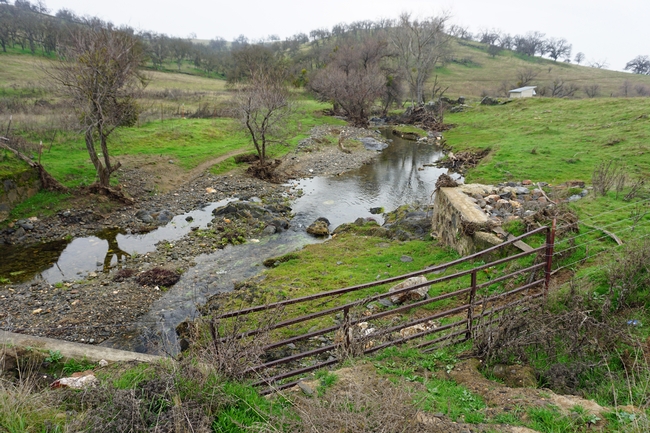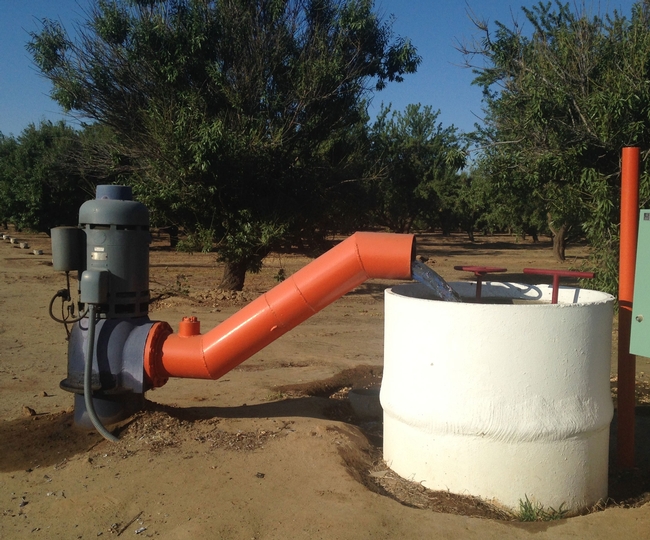Posts Tagged: SGMA
There’s a danger in over-simplifying California water conservation
You hear it every time drought returns to California: “Turn off the faucet when you brush your teeth.” “Collect shower water in a bucket before it warms up.”
While valuable, these tried and true drought resilience strategies can also deflect attention from the monumental challenges posed by droughts to natural areas, waterways, agriculture and people in California. Far-sighted and discerning management of the state's annual precipitation and groundwater is critical, particularly as droughts become more frequent due to climate change, said Faith Kearns, the academic coordinator of UC's California Institute for Water Resources.
“Like so many big societal problems, we don't want to get caught up believing individual actions alone will solve this problem,” Kearns said. “Conserving water in households can help people feel activated and certainly conserve some water. But, at the same time, it's not enough. We have big, systemic issues to deal with.”
Urban water use in homes, landscapes, schools and businesses amounts to about 10% of total developed water use in California, according to the Northern California Water Association. Irrigated agriculture uses 41%. The remaining 51% is used for water in rivers protected by state and federal laws as “wild and scenic,” water required for maintaining habitat in streams, and water that supports wetlands in wildlife preserves.
Traditionally, when surface water supplies for California farmers are cut during droughts, farmers pumped groundwater to bridge the gap. Over time, many of the state's groundwater basins have become severely depleted. In 2014, during a devastating five-year drought, the California Legislature passed the Sustainable Groundwater Management Act to regulate groundwater use in the state for the first time. The law aims for sustainable groundwater maintenance by 2040.
“We're in the implementation phase and local groundwater agencies are in various stages of developing and implementing sustainability plans,” Kearns said. “This is an opportunity for public participation to ensure all voices are heard in the effort.”
Of particular concern are underserved rural families who rely on wells for their household water. When the water table drops due to excessive pumping, the families can be left without water for drinking, washing and bathing. Small scale farmers often meet the same fate. Larger, neighboring farms may be able to drill deeper wells.
Wintertime flooding in permeable areas is one way groundwater can be recharged as it is used during the dry season. Getting access to water, developing infrastructure and flooding large farms will allow water to seep back into aquifers. Small-scale farmers can also be involved, said Ruth Dahlquist-Willard, the UC Cooperative Extension advisor to small-scale farmers in Fresno and Tulare counties.
“If there was a way to incentivize recharge on small farms, I think we could really contribute to groundwater management,” Dahlquist-Willard said. “It is not just about how we protect small farmers but also about how we involve them and have something that works for everyone's benefit.”
Fallowing land will likely be needed to meet the groundwater law's sustainability requirements. A 2020 report by UCCE specialist David Sunding and UC Berkeley professor David Roland-Holst, Blueprint Economic Analysis: Phase One Results, estimates about 992,000 acres of California farmland will go out of production, representing $7 billion in lost crop revenue and $2 billion in lost farm operating income.
The public can support smart and equitable water management by learning about decisions being made by their own local water providers and elected government representatives that impact the future of the California water supply. UC Agriculture and Natural Resources and its California Institute of Water Resources have gathered materials to serve as a starting point for understanding and advocating for sustainable water.
Science-based drought tipsheets
Online drought and water management seminar series
Listen to these episodes of the Water Talk podcast:
Episode 02: Ranching and Water in California — Water Talk
Episode 09: Small Farms and Water in California — Water Talk
Episode 10: California Water Policy and Extension — Water Talk
Episode 15: Wild Horses and Water in California — Water Talk
Episode 16: Agriculture in the California Borderlands — Water Talk
Episode 21: Watering Urban Green Spaces — Water Talk
Find more on the UC California Institute for Water Resources website.
One-fifth of valley farmland to go fallow when groundwater rules go into effect
UC Cooperative Extension specialist David Sunding and UC Berkeley professor David Roland-Holst estimate that one-fifth of cultivated farmland in the San Joaquin Valley will be permanently lost as groundwater plans take hold and water supplies are severely restricted, reported Todd Fitchette in Western Farm Press.
The report, Blueprint Economic Impact Analysis: Phase One Results, says statewide the losses could total about 992,000 acres of farmland, losses of over $7 billion from crop revenue and a loss in farm operating income of nearly $2 billion.
The Sustainable Groundwater Management Act (SGMA) was passed during the 2011-2016 drought to return California aquifers to sustainable levels after decades of over drafting. Local agencies will ensure that groundwater extraction matches groundwater replenishment by 2040.
The report says the rise in almond acreage across the state will soon need to end as farmers in the San Joaquin Valley fallow more than 325,000 acres of tree nuts. Two-thirds of that acreage will be pulled from Fresno and Kern counties.
The labor market will also take a hit.
"We calculate that the direct employment losses from SGMA plus anticipated surface water reductions will total 42,000 jobs on average," Sunding and Roland-Holst wrote. These employment losses ... total $1.1 billion annually in the San Joaquin Valley."


